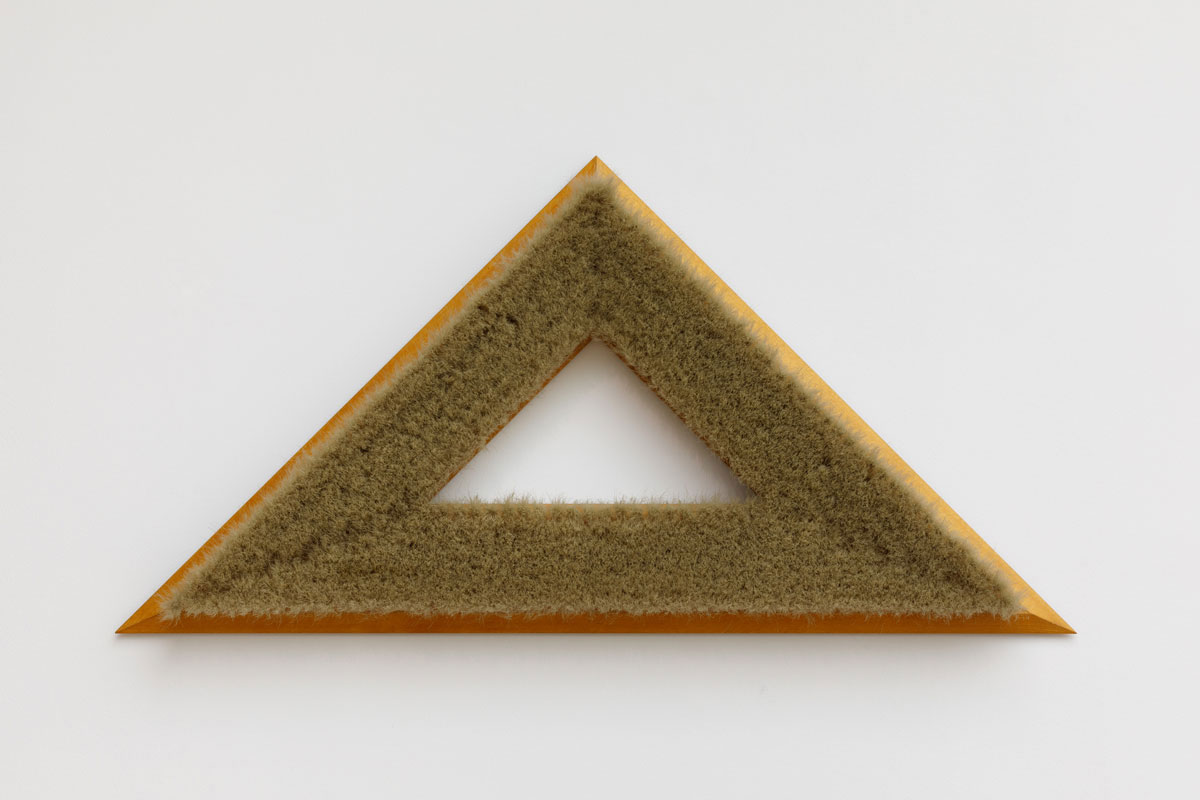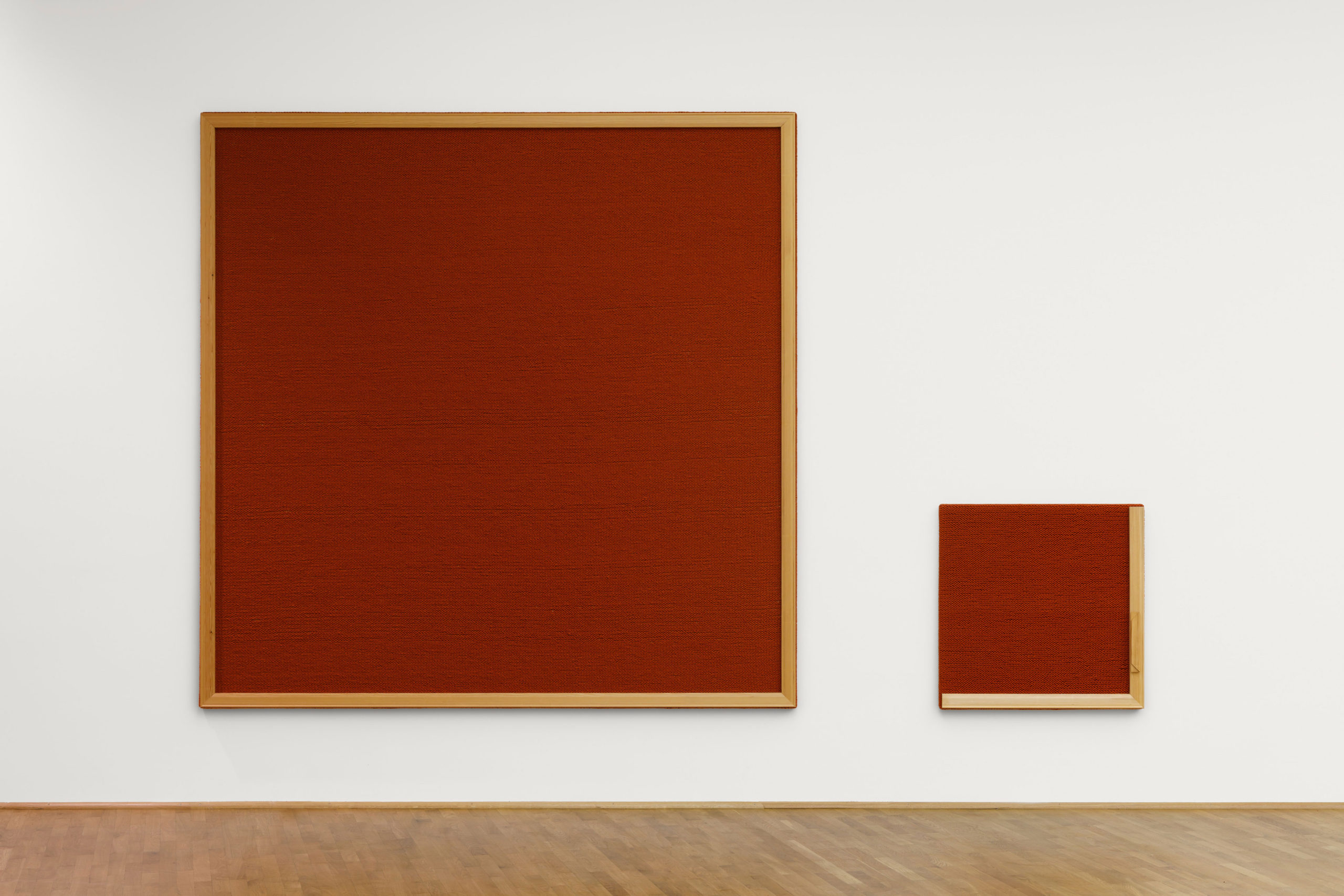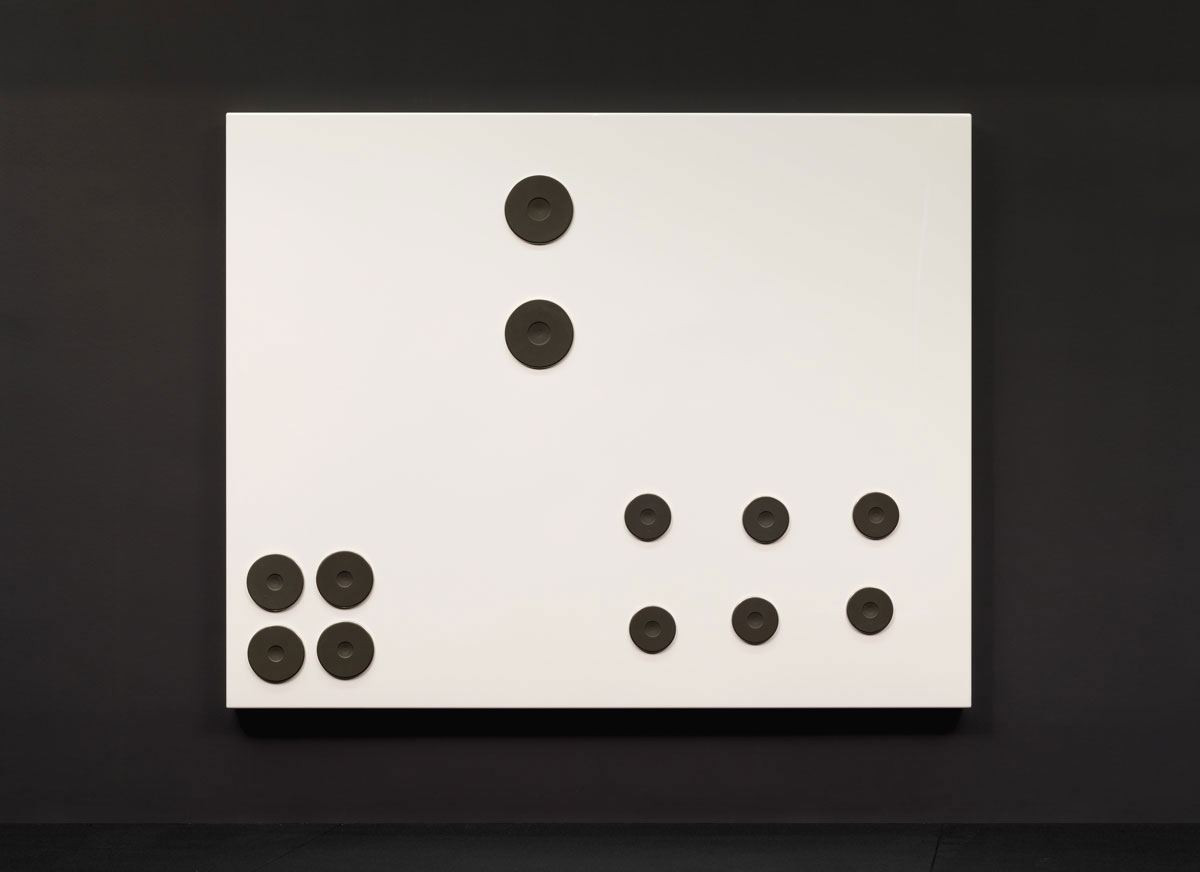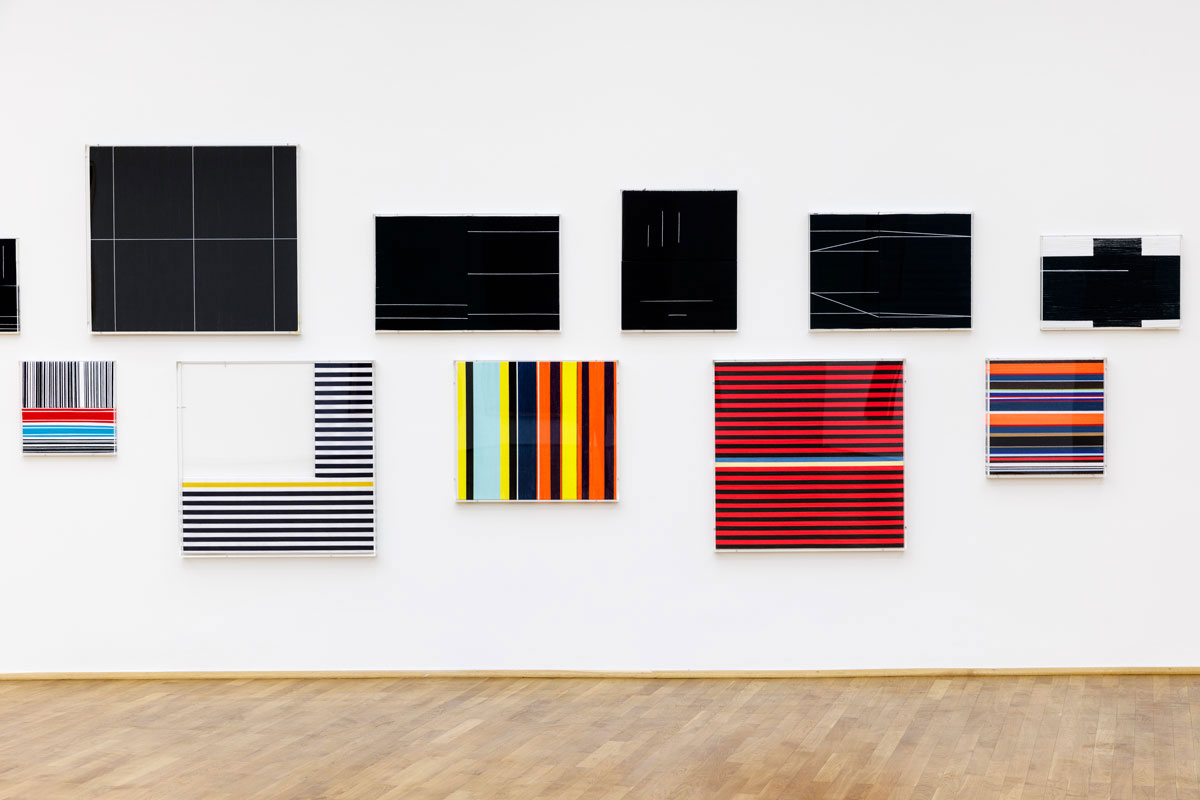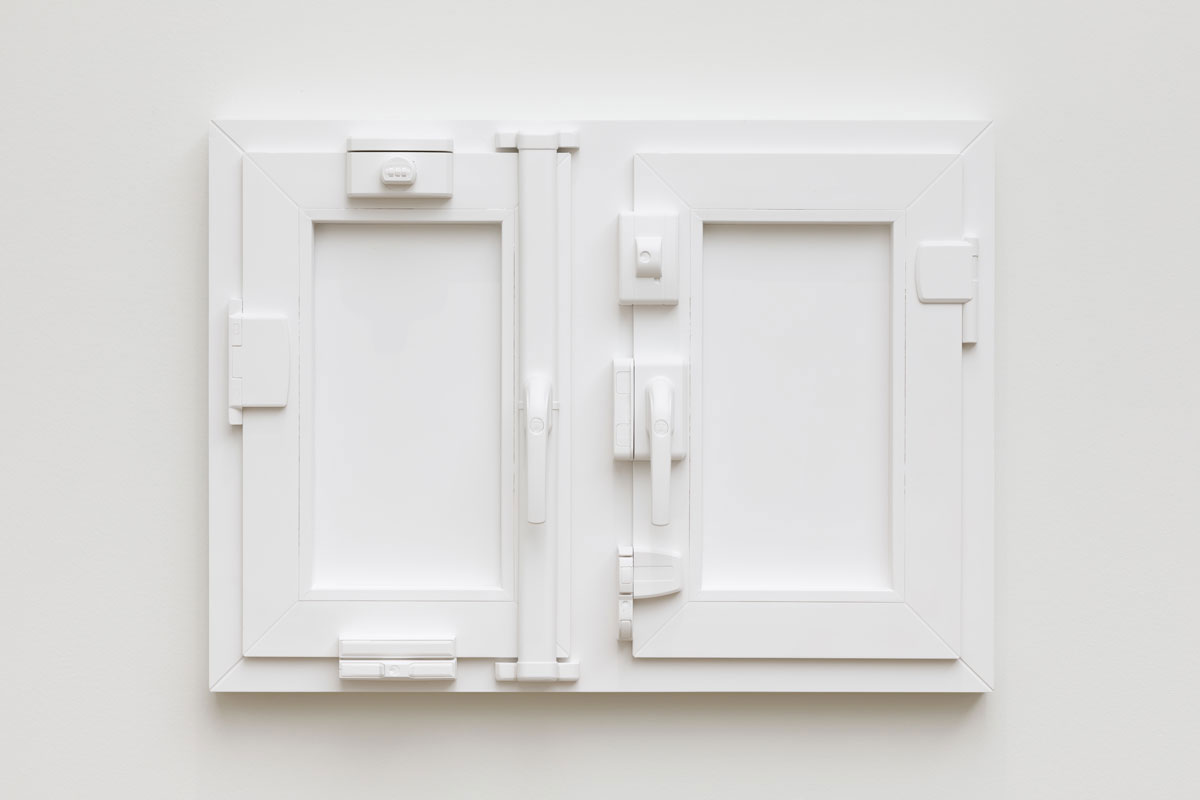PRESENTATION: Rosemarie Trockel, Part II
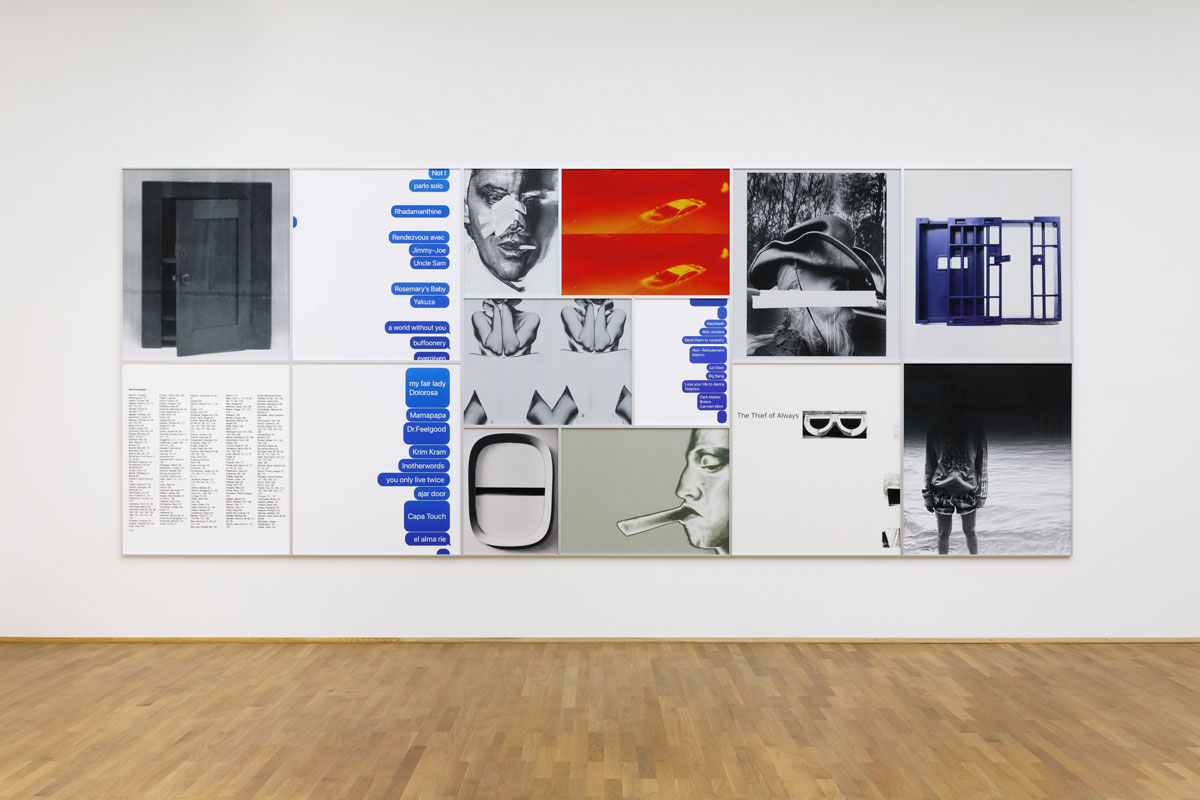 Rosemarie Trockel is widely regarded as one of the most important and influential conceptual artists in Germany. Her sculptures, collages, ceramics, knitted works, drawings and photographs are noted for their subtle social critique and range of subversive, aesthetic strategies—including the reinterpretation of “feminine” techniques, the ironic shifting of cultural codes, a delight in paradox, and a refusal to conform to the commercial and institutional ideologies of the art system (Part I).
Rosemarie Trockel is widely regarded as one of the most important and influential conceptual artists in Germany. Her sculptures, collages, ceramics, knitted works, drawings and photographs are noted for their subtle social critique and range of subversive, aesthetic strategies—including the reinterpretation of “feminine” techniques, the ironic shifting of cultural codes, a delight in paradox, and a refusal to conform to the commercial and institutional ideologies of the art system (Part I).
By Efi Michalarou
Photo: MMK Archive
The comprehensive exhibition at MMK displays works from all periods of Rosemarie Trockel’s oeuvre, from the 1970s to the new works created especially for the museum. The brutality and absurdity of normative regimes emerge openly in the work of Rosemarie Trockel. Definitions, restrictions, paternalism, and violence due to gender become visible and transparent. Her advance is a risky, courageous, combative, and humorous one. In all media—drawing and painting, photography, sculpture, installation, and film—Trockel’s sociological gaze is as much directed at social regimes and political structures as it is at nature. Her observations and studies of processionary caterpillars, starlings, chickens, or lice, while scientifically sound and precise, always include her own critical gaze as a vital component. She appropriates the ambivalences in her work, capturing them decidedly. Rosemarie Trockel was born in Schwerte in 1952. After initially studying Anthropology, Comparative Religion and Mathematics, she attended the Werkkunstschulen, Cologne, where, from 1974 to 1978, she studied Fine Art in the Department of Print-making and Design. She has received numerous prizes and awards for her work. She lives in Cologne Trockel has focused on sculptural work since the early 1980s. Her sculptures have included hollow, vase-like objects in clay, bronze casts of dead animals and numerous works incorporating display cases. She is especially well-known for her objects made using oven hotplates and lengths of machine-knitted woollen cloth, into which she incorporates symbolic knitted pictures or which has made up into strange looking pieces of clothing – socks or face masks. A further part of her output consists of works on paper using ink, pencil, chalk or oils. At the end of the 1970s, Trockel made a series of videos of animals, in which she combined film she had herself shot with material from other sources; and since the mid-1990s she has produced large-scale photographic portraits of animals. The knitting stretched on canvas, “Cogito, ergo sum” (1988) reclaims two triumphant affirmations from the history of thought: a quotation by Descartes on one hand, and Malevich’s black square on the other. By juxtaposing these elements, she reveals their common thread: both were articulated by men of dominate positions in society. Through knitting, she simultaneously belittles this overexaggerated masculine ego and restores a complimentary place to that of the feminine – often forgotten in order for the masculine to exist.
In R. Trockel’s body of work, she indeed asserts a feminine perspective, questioning the differences between that which is considered noble creation and that which is considered ornamentation. In fact, she was trained in a school of applied arts, the Werkkunstschule in Cologne, between 1974 and 1978. The question of the decorative is found throughout her work, for example in the drawing entitled “Ornement” (2000), in which a masculine body is presented in a contortionist pose, exposing his genitals in the centre of the composition. Here, ornamentation is charged with eroticism and violence, far from her usual associations. In 1984 she returned to an artistic context through painting, and became known for her wool works. Typically rich in meaning, the Woolmark logo, the Playboy bunny, the hammer and sickle, and the swastika are motifs that repeat endlessly in these works. This decontextualization and reiteration removes all substance from them, erecting them as “logos”, the only status granted to representation in our society of the image, according to Peter Weibel. At the same time, the works stand apart from the logic of mass production, as they are knitted by computer-controlled machines that produce patterns by R. Trockel – the machinery produces unique pieces. These “knitting pictures” reference art of the twentieth century, from the work of Niele Toroni and his methodical repetition of regular motifs, to that of Andy Warhol and the multiplication of pop images. This also extends into the fabrication of her woollen garments, such as her balaclavas or jumpers with two head-holes. From 1987, R. Trockel adopts yet another traditional social status symbol of the woman into her work – the hot plate. Unambiguous in its materialisation of the duties of the housewife, the hot plate is diverted from its typical function and presented vertically in compositions evoking minimalism and op art. Thus, the contrast between the heating function of the object and the cold manner in which it is displayed is made salient. Yet another accentuated contrast is that the plate, while a tool, resembles a fragmented female anatomy: thus both breasts and Marcel Duchamp’s infamous Prière de toucher are evoked by the work (Untitled, 1993). The question of the portrait is essential in the work of R. Trockel, as she introduces the gaps that interest her. Sometimes the portrayed model is a monkey with strangely human expressions (Untitled, 1985). At other times representations of each of her family members prove to be, after analysis, a general commentary on the discoveries of Freud (Gipsmodelle + Entwürfe, [plaster models and drawing], 1994–1995).
Elsewhere, double portraits in pencil, or photocopied, reassemble gender and its connotations. She even merges her own face with that of her partner, Andreas Schulze, in a work from 1992. In the series B.B. from 1993, the features of Brigitte Bardot, symbol of sexual liberation, meld into those of Bertolt Brecht, and multiple other lovers. R. Trockel represented Germany in the Venice Biennial of 1999. In her videos of the 1990s she has often concentrated on the movements of human individuals, animals or objects. Thematically, Trockel’s work addresses issues such as notions of femininity, the significance of commercial and political symbols, the role of animals as mirrors of the unconscious, artistic strategies, and the mechanism of the art market. The artist has also been designing so-called “Moving Walls”since the early 2000s, works made of coated aluminum discs that are attached to a wall like moving sequins, transforming the wall into a picture surface that refracts light in various ways. The artist’s objects are almost always defined by a focus on the viewer’s particular physical experience in their perceptive interaction with the artwork. Constantly shifting, they undermine viewers’ understanding of objects so as to generate new, unforeseen meanings. Trockel’s oeuvre is fueled both materially and conceptually by a constant process of collecting, overwriting and re-ordering. This impulse becomes clearly apparent in her more recent “Cluster” (2015–present) works, which consist of digitally reconfigured photographs that the artist recombines with idiosyncratic logic to form a kind of visual diary for various exhibitions. Or in her more recent collages, for which she applies various materials to painted wooden frames in an assemblage-like arrangement. Some of these materials quote her own works, a method that allows her to bring her radically open, free and constantly changing creative process to the fore. Trockel regards the artwork as an unstable aggregate of form and concept, deploying this radical instability to dismantle a range of cultural categories, rules and dogmas.
Photo: Rosemarie Trockel, CLUSTER VI – Door Ajar, 2021, Courtesy of Sprüth Magers, © The artist & VG Bild-Kunst, Bonn 2022, photo: Axel Schneider
Info: MMK (Museum Für Modern Kunst), Domstraße 10, Frankfurt am Main, Germany, Duration: 9/12/2022-18/6/2023, Days & Hours: Tue & Thu-Sun 11:00-18:00, Wed 11:00-19:00, www.mmk.art
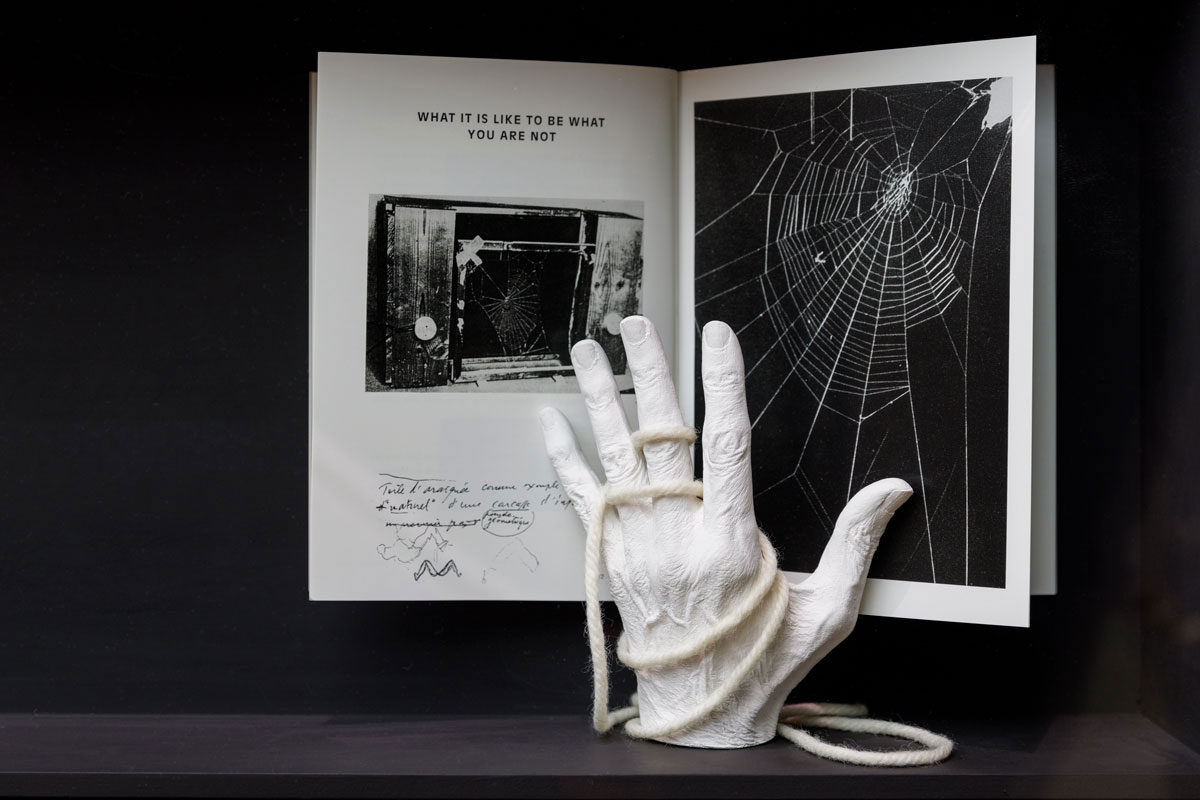
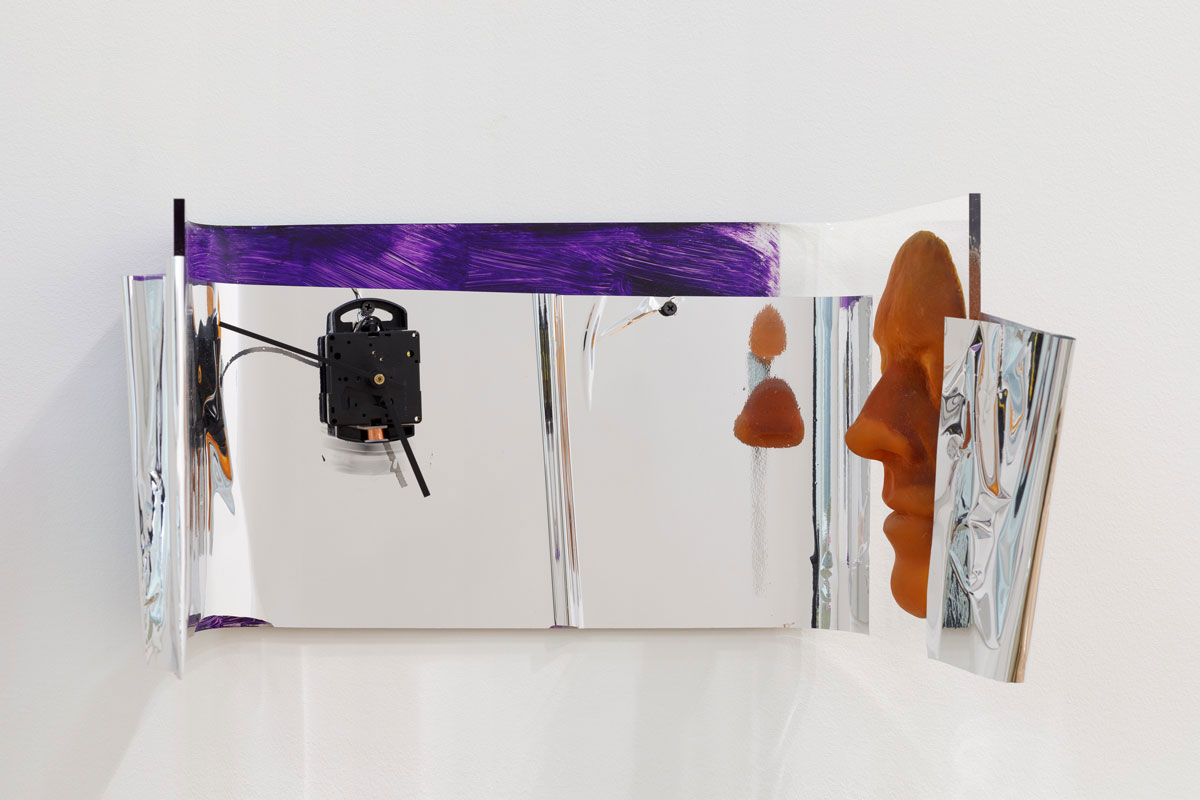
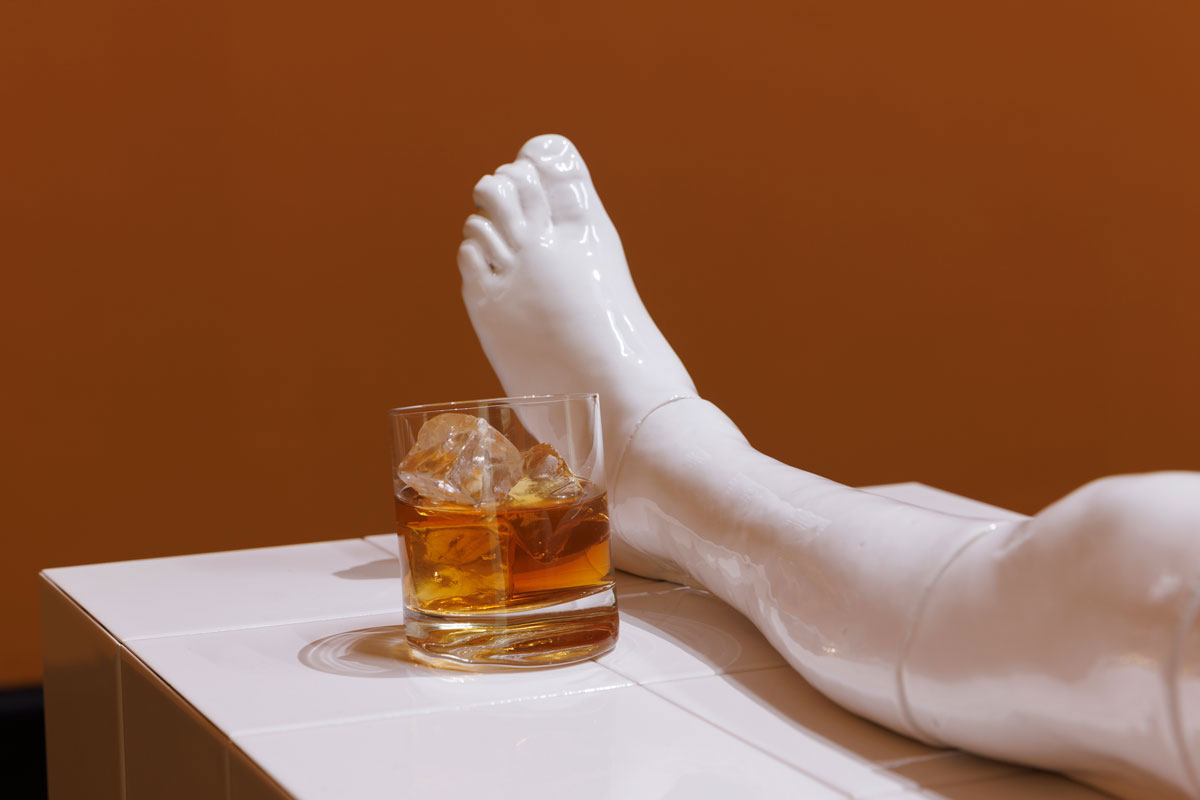
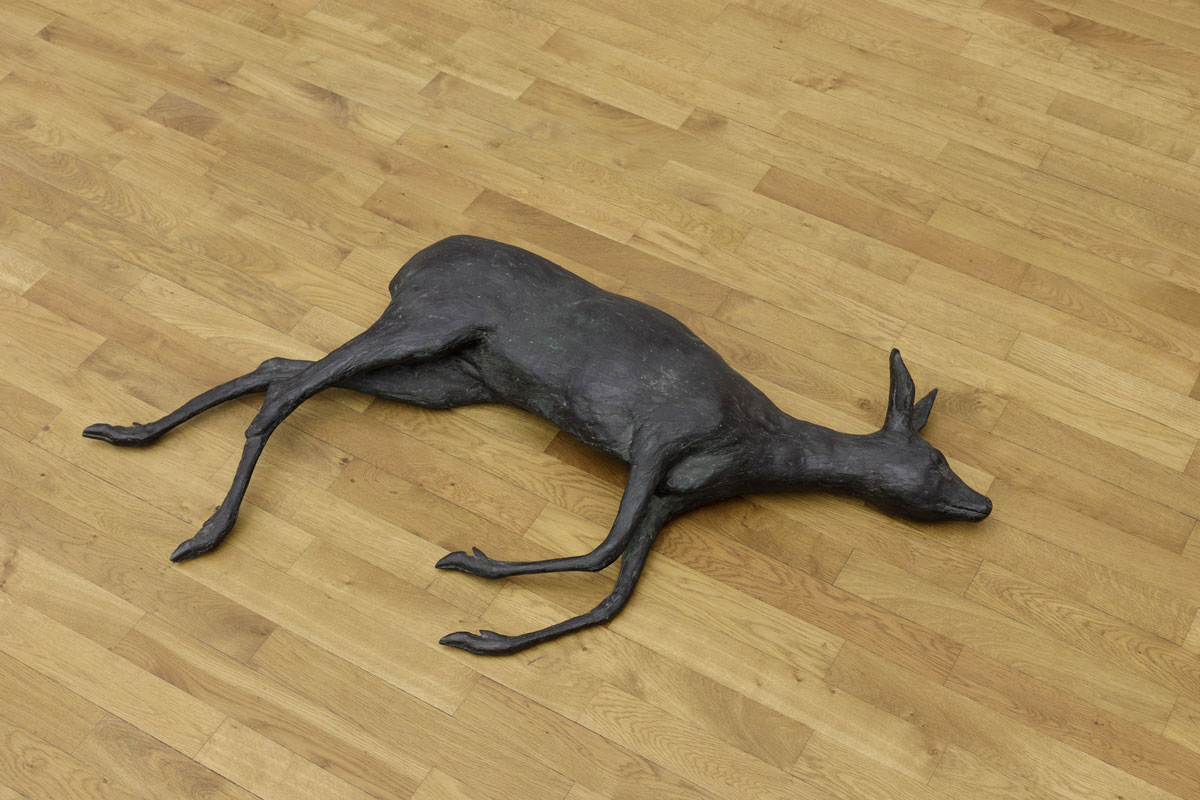
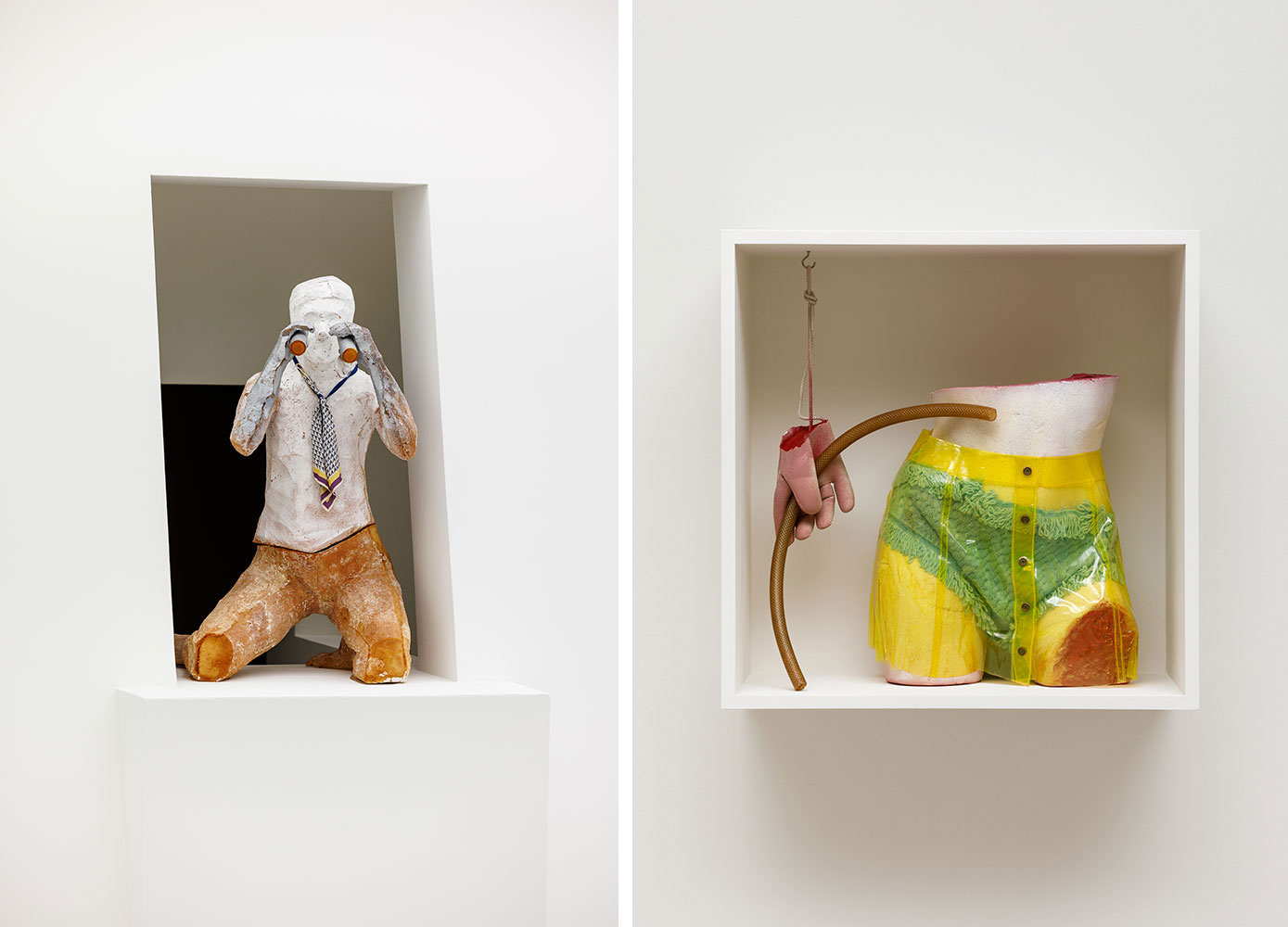
Right: Rosemarie Trockel, Aus Yvonne, 1997, Grażyna Kulczyk Collection, © The artist & VG Bild-Kunst, Bonn 2022, photo: Axel Schneider
